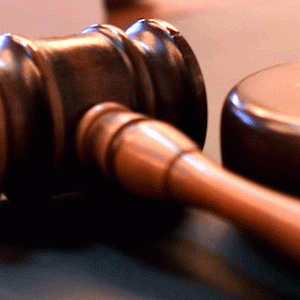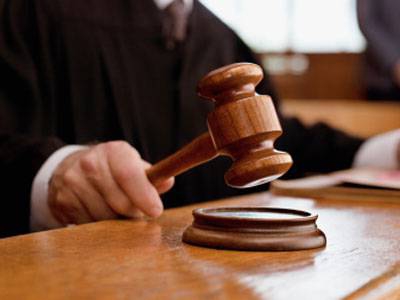Legislation enshrines the provision that each interested person has the right to apply to the judicial authority to protect their interests. This opportunity is guaranteed by the state. In such cases, a statement of claim appears as a tool. Next, we consider its elements in more detail. 
General information
The subject of disputes, for the resolution of which individuals turn to the court, is very diverse. Requirements differ in subjective composition - participants in the process, material side. Each situation is characterized by its own basis of action. The current legislation defines two individualizing components of the application. The first is the subject of the lawsuit. It is an interest protected by law and the protection of which is required by the applicant. It may be, in general, the attitude within which the dispute arose. The second key element is the basis of the claim. The concept of this component includes those legal facts according to which the claim is made.
Classification requirements
In accordance with those listed in Art. 12 of the Civil Code by means of protection, the applicant may ask the authorized authority for:
- Change or termination of the relationship. The court can fulfill this requirement only in cases established by law.
- Forcing the defendant to take any action or to refrain from taking them.
- Recognition of the absence or existence of an obligation, subject law or legal relationship in general.
Awarding
The subject in these cases is the legal opportunity of the plaintiff to demand from the defendant, in connection with the failure to fulfill the corresponding obligations voluntarily, a certain behavior. For example, the applicant asks to recover a sum of money. In this case, the subject is the plaintiff's material right to receive funds. At the same time, the defendant will have to pay this amount.  The subject of the claim for damages is the right to demand the elimination of the consequences that caused the damage. Accordingly, the defendant is obliged to take certain actions to accomplish this task.
The subject of the claim for damages is the right to demand the elimination of the consequences that caused the damage. Accordingly, the defendant is obliged to take certain actions to accomplish this task.
Ground of action
As it was said above, any legal fact acts as it. For example, it may be a transaction in the framework of which an agreement is concluded whose conditions are not fulfilled, violated or infringed upon, the time has come to fulfill the obligation, the damage has been done, and so on. The basis of the claim, as a rule, includes not one fact, but several. This totality is called the actual composition of the case. According to the APC, the basis of the claim must be confirmed by reference to the norm, which is violated, according to the applicant, by the defendant. Thus, the requirements will be legally confirmed.
Important point
In accordance with applicable law, the competent authority considering the dispute cannot go beyond the requirements of the applicant. Along with this, the norms do not allow a change in the subject or basis of action by the court. This opportunity is available only directly to the applicant. If the requirements are justified by a norm that is not enforceable, then this will act as the basis for the denial of the claim. 
Legal aspect
According to some authors, the legal basis of the claim should not be identified with the actual one. This statement is confirmed by the decision of the Plenum of the Supreme Arbitration Court. According to it, a change in the basis of the claim involves a change in the circumstances on which the applicant bases his claims.The dispute officer may indicate other rules in the reasoning section. Such an action is not regarded as a change by the court of the basis of the claim. This is a decision on the merits in accordance with relevant regulations. This behavior does not contradict rule of law at arbitration process.
Applicant Features
Quite often in practice there are cases when the plaintiff changes his legal position in the course of the dispute proceedings. In the event that his interest remains the same, and only the size of the claims or one of the elements of the statement is adjusted, the authorized authority is obliged to consider the claim in a new form. The above decision of the Plenum of the Supreme Arbitration Court clarifies that changing the basis of the claim, reducing or increasing the size of claims and other adjustments are allowed before a decision is made in the first instance. This opportunity can be used by the applicant in new proceedings in the same body when the decision is canceled by the cassation or supervisory authority. The change in the subject of the claim is the replacement of the original element with another, provided that the basis (the actual composition of the case) is preserved.
Ways to meet requirements
The legislation provides for several tools that the applicant can use. So, in paragraph 1 of Art. 723 of the Code of Civil Procedure of the grounds for the claim are defined as "the contractor's departure from the contract, which worsened the result of the work or provoked other deterioration." In this case, the applicant may require:
- A commensurate reduction in the price set for work.
- Gratuitous elimination of deterioration.
- Reimbursement for correction of deficiencies.

In practice, there are also cases where different legal relationships protect one interest. For example, the Presidium of the Supreme Arbitration Court recognized that it is permissible to replace claims for the reimbursement of interest on the use of other people's amounts of money in accordance with Art. 395 of the Civil Code for the collection of a fine for violations during settlement transactions.
Controversial cases
Quite often, in practice, there are situations when a person who has submitted a claim for debt collection, when considering a dispute, submits a request for the application of property sanctions to the defendant. The plaintiff in this case refers to his legal opportunity to supplement (change) the subject of the claim. This provision is established in Part 1 of Art. 37 Arbitration PC. The same rule permits an increase in the size of claims, which is also often used by applicants.
However, it is worth noting that the application for recovery from the defendant of the main debt and, for example, forfeits have different factual basis and subject. The first requirement comes from a contractual relationship. The applicant’s claim to receive the amount established in the terms of the agreement acts as its subject. The second follows from breach of contract. At the same time, its subject is the plaintiff's opportunity to receive compensation for property loss that arose as a result of non-compliance with the terms of the agreement by the defendant. In this regard, the claim for the recovery of the penalty, which is submitted in addition to the initial application, should be considered as an independent application. This lawsuit is filed in a separate order.
Example
As mentioned above, the basis of a claim, as a rule, includes several circumstances. The applicant, according to the law, can make adjustments both to the whole composition of the case, and to its individual elements. So, the landlord, who claims the early termination of the lease, in resolving the dispute has the right to change the basis of the claim one of those given in Art. 619 fact:
- Tenant's use of property with obvious violations of its purpose or the terms of the contract.
- Significant deterioration in the condition of the object.
- Failure to pay rent on time more than 2 times in a row.
- Failure to carry out major repairs (if this responsibility is assigned to the defendant).

Abuses
In practice, there are frequent cases when plaintiffs unreasonably use their right to change the basis of claims. For example, a statement may be made regarding the recovery of losses. The basis of such a requirement is the contract between the counterparties and the failure to properly perform the duties of the defendant. If the issue of concluding an agreement is controversial, the applicant can “hedge” and supplement his claim with reference to the fact of causing non-contractual damage. In this case, the lawsuit will have two objects and grounds, mutually exclusive of each other. In this case, the applicant’s interest will be the same in both cases. According to the decision of the Plenum of the Supreme Arbitration Court, the Arbitration PC prohibits the simultaneous change of the basis and subject of the claim.
Element relationship
As practice shows, almost always when making adjustments to the subject of a claim, its basis is changed (at least partially). This also applies if the applicant does not pursue such a goal. For example, under paragraph 1 of Art. 475 GK, the buyer who received the products of inadequate quality from the seller may require:
- Gratis elimination of defects within a reasonable time.
- A commensurate reduction in the selling price.
- Reimbursement of expenses incurred by the plaintiff for the elimination of defects.

If the applicant first requires the gratuitous elimination of defects, and then instead reimbursement of expenses, then the circumstances of the case will be different. In the latter case, the plaintiff will have to justify the amount and origin of the costs that he incurred. And at the initial requirement this need is absent.
Normative Collision Resolution
The theory of civil procedure provides a position on which the simultaneous replacement of elements of the requirement is not allowed. However, in this case, the subject of the claim can be changed with the subsequent transformation of the circumstances indicated in its basis. If we take into account that the protection of interest and its invariability acts as a key point in these conditions, then Art. 27 Arbitration PC. In other words, we can say that a simultaneous change in the elements of the statement is impossible if the interest that is protected by it is transformed. But if it remains the same, then within the framework of the procedural economy (so as not to initiate proceedings under the new requirement), the authorized body should allow the application to be adjusted. This is possible even in cases where such a transformation may entail a change in foundation. 
Conclusion
In part 4 of Art. 37 of the Arbitration Tribunal stipulates that the court does not certify the settlement, does not accept the recognition or rejection of the claim, reduces the amount of claims if it is contrary to the law or is not consistent with other regulatory acts, or violates legitimate interests or infringes on the freedoms of other persons. In such cases, the consideration of the dispute is carried out on the merits. At the same time, the Arbitration PC does not directly determine the consequences that may occur when the plaintiff submits a request to change the subject and the grounds of its initial application. If you are guided by the provisions of part 1 of article 37, the action of the authorized instance to reject the application can be regarded as not complying with the law. However, this option will be most preferable for the plaintiff, since in this case the dispute will be considered on the merits.